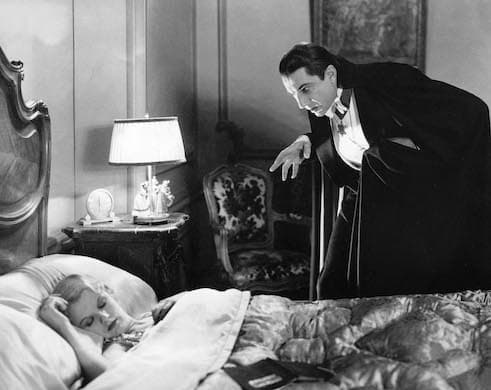The Film Director Defined by ‘Freaks’
A retrospective titled ‘Unspeakable: The Films of Tod Browning,’ running March 17-26 at Film at Lincoln Center, offers a look at the man behind an experiment in realism that proved too potent for general consumption.

“Unspeakable: The Films of Tod Browning,” a retrospective running March 17-26 at Film at Lincoln Center, can’t help but highlight the movie “Freaks” (1932). It is, after all, Browning’s most famous picture — largely because it’s the one that made him utterly infamous.
Even if you haven’t seen the movie, you’ve likely heard tell of it: the story of thwarted love and not-so-divine retribution featuring a cast of actual circus performers with noms de plume like “The Human Torso,” “Pinhead Pip,” and “Josephine Joseph, the Double Bodied Half Man-Half Woman.” There can be no comfort taken in expert prosthetics or special effects when considering “Freaks.” The creatures in this particular feature are real.
“Creatures” is a harsh word, given the real-world exigencies of the performers, but, then, MGM did task Browning with creating “something even more horrible” than “Dracula” (1931), his critically acclaimed and financially successful adaptation of the Bram Stoker novel.
Be careful what you ask for: Audiences and critics were, in fact, horrified by “Freaks,” its experiment in realism proving too potent for general consumption. Keeping its fingers crossed, MGM cut 30 minutes from the running time and then pulled it from distribution altogether. Browning’s career never fully recovered.
Whatever one’s take on the picture — the critic Andrew Sarris, in a moment of contrarian pique, dubbed it “one of the most compassionate films ever made” — “Freaks” is a notable piece of Americana, not least because of its biographical tangents.
The scion of a middle-class Baptist family, Browning was the rare teenager to truly run away from home to join the circus. His duties there were varied, often inventive and sometimes bordering on fraud. Browning created an act dubbed “The Living Hypnotic Corpse” in which he performed as the title attraction.
Browning made his way to Hollywood and worked as an actor, but found his primary niche as a director after working with D.W. Griffith on “Intolerance.” He helmed nine movies with Priscilla Dean, a forgotten starlet of the silent cinema, and joined forces with Lon Chaney Sr. for 10 pictures. Among the films he made with the Man of a Thousand Faces were two versions of “The Unholy Three” (1925 and 1930), the cruelly ironic melodrama “The Unknown” (1927), and “London After Midnight” (1927), the latter being the Holy Grail of lost films.
Given his track record of performing grotesques, oddballs, and, yes, freaks, Chaney was a shoe-in for the title role in “Dracula.” His death of lung cancer at age 47 allowed, instead, for the casting of Bela Lugosi, a Hungarian actor who had already achieved notoriety as the Transylvanian count on the Broadway stage.
Notwithstanding notable takes on Dracula by the likes of Max Schreck, Christopher Lee, and Gary Oldman, Lugosi continues to rate as the prototypical cinematic Dracula, what with his theatrical flourishes, lugubrious manner, and European pedigree. The entire cast of “Dracula” is outstanding, especially Edward Van Sloan as Dr. Van Helsing and Dwight Frye as Renfield, the Count’s bug-eating henchman.
The trouble with the film is Browning, who barely elevates the proceedings beyond a staginess that creaks more loudly with each passing year. Many horror aficionados prefer the Spanish-language version made on the same set after Lugosi and Company called it a day: It’s more fluid cinematically. However, Browning did prove aces when providing atmosphere, and the scenes in which the Brides of Dracula appear are particularly effective.
The director teamed up with Lugosi again for “Mark of the Vampire” (1935), basically a remake of “London After Midnight,” and then let Lionel Barrymore ham it up in drag for “Devil Doll” (1936), a curiosity notable primarily for its miniaturization effects.
After the desultory “Miracles for Sale” (1939), Browning was let go by MGM and, depending on whose account you want to believe, either left Hollywood on his own volition or was blackballed. Either scenario seems credible for a man to whom contradiction and contrivance were second nature. In that regard, “Unspeakable: The Films of Tod Browning” is a fittingly melancholic tribute.
Correction: “Unspeakable: The Films of Tod Browning” is the name of the retrospective. An earlier version referred to the name of the retrospective before it was changed.

